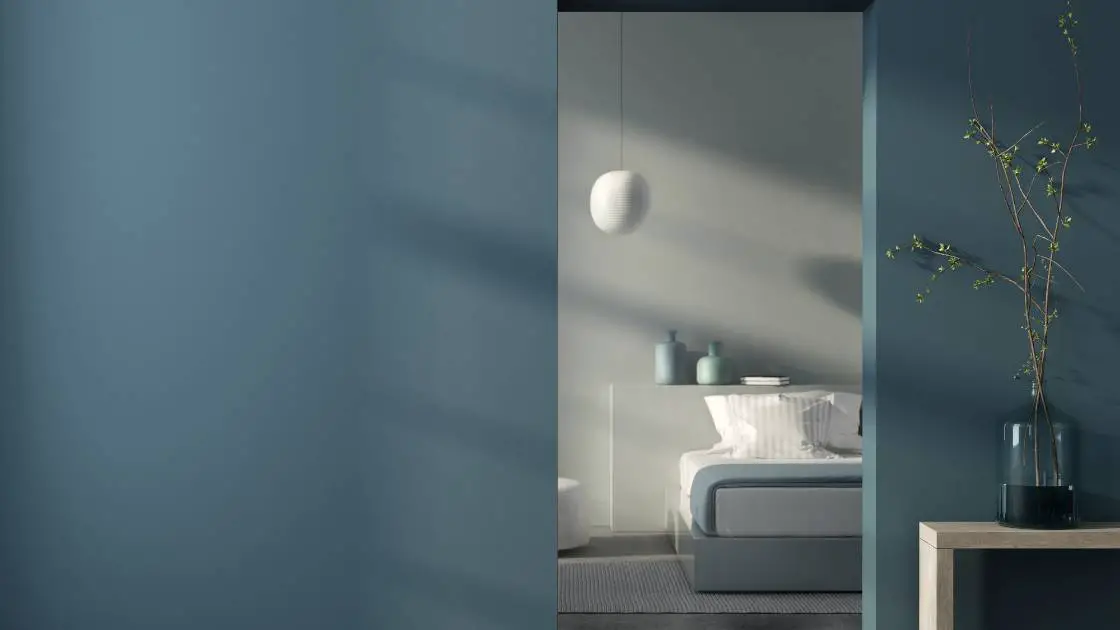Housing codes and other laws are pretty clear around what an apartment or rental property needs. For example, tenants can rightly expect that their new home will have functioning plumbing, electricity, and heating systems.
But what about the rooms inside the property? For example, does a bedroom have to have a door?
In some cases, a living space may be partitioned off and not have a real door (maybe just a curtain). Or it may have an opening that is like a doorway to the rest of the home, but not have a door installed.
While a door to a bedroom can be essential for privacy when you are living with roommates, it may not be as important if you are living alone or with close family members.
In any event, whether a bedroom needs to have a door to qualify as a bedroom is a legitimate question.
In this article, I am going to answer the question and discuss some of the key legal rules and organizational guidelines around this topic. I will also provide some state specific regulations governing this, so you can get a sense of how various jurisdictions have handled this matter.
If you don’t have the time to read through it all, here’s a short answer to the question:
As a general matter, a bedroom needs to have some form of egress to the outside, which can be an exterior door or suitably large window. In addition, a bedroom will often be required to be connected to the rest of the interior via a doorway or similar opening.
In some cases, you may not necessarily need to have a door installed but the opening to the rest of the house should often be capable and large enough to have a door installed.
Ok, let’s get into it!
The information contained in this post is for informational purposes only. It is not legal advice. You should seek the advice of a qualified legal professional before making any decisions relating to the topics covered by this article.
We may earn commissions from products and services that are purchased or recommended through our website as part of our affiliate partnerships. As an Amazon affiliate, we may earn from qualifying purchases.
Requirements for Doors In Bedrooms
As mentioned above, egress is critical for a bedroom.
So if a bedroom does not have a window suitable for exiting the building, then in most cases, it must have an exterior door. This is for safety reasons in the event of a fire or similar hazard.
As for an interior door that connects to the rest of the inside of the house, state and local laws may differ on requirements, but in many cases, there must be some form of opening between the bedroom and the rest of the house.
In some states like Virginia, the opening must not lead to another bedroom. Source.
Similarly, New York State law requires that a bedroom can’t be the only way to access other bedrooms or habitable spaces (like a living room) and can’t be the only way to exit other habitable spaces. Source.
As you can imagine, you will need to do some digging to find out what rules apply to your state (or hire a lawyer to help you).
For your convenience, here’s our 50 state reference table (including D.C.) that will link you to the official landlord tenant laws of your state.
If you prefer to have a lawyer assist you, I would try JustAnswer. They boast access to thousands of highly-rated, verified real estate lawyers whom you can connect with via their unlimited chat service.
By clicking the banner below, you can get a one week trial membership for only $5, which you can cancel at any time.

Organizational Guidelines Governing Bedrooms
As just mentioned, basic building codes generally vary from state to state, but the International Residential Code (IRC) and the International Code Council (ICC) provide some guidelines that can be instructive in understanding some of the basic requirements that most states may follow.
IRC and ICC Guidelines on Doors in Bedrooms
Both the IRC and the ICC expect all bedrooms to have at least one accessible entrance from common living areas inside the house.
Unfortunately, the codes aren’t quite specific with the door that comes with these entrances.
As long as there’s an entrance and an egress, a living space could legally be considered a bedroom.
Emergency Escape
We’ve covered this already, but to recap, a bedroom must have an emergency exit or an egress that’s different from the main entrance. This could either be another door that directly leads outdoors or a window.
Windows count as an emergency escape as long as it fits the recommended size requirements. Ideally, it should be between 24-44 inches above the floor.
This is mainly to avoid any accidents with small children climbing out. Additionally, to keep it functional and accessible for adults, it shouldn’t be more than 44 inches from the ground.
Size
According to the IRC R304, all habitable rooms—including the bedroom—must have a floor space of 70 square feet.
Horizontal dimensions around the room shouldn’t be less than 7 feet too. Some codes require no less than 50 square feet for each person occupying the bedroom.
However, there are exceptions to these guidelines.
For example, it’s possible to have kitchens with smaller floor areas—typically those found in loft-type units where the kitchen area is integrated with the common living space.
Windows
Windows are primarily a source of lighting and ventilation—both are requirements for habitable bedrooms. Most codes need at least one window, which has to open halfway.
The glass area of all the windows should comprise around 8% of the room’s total floor area.
For more details on whether a bedroom needs to have a window, check out my full article on the topic here.
Closet Space
Most tenants would expect a closet space in a bedroom, but the IRC doesn’t really have any specific regulations for it. That said, the landlord isn’t legally required to build one.
However, since most property owners consider what future tenants are looking for in a rental space, some buildings have built-in closets in designated bedrooms.
Other Requirements
There are also some safety requirements, including smoke alarms. All bedrooms should have one installed in accordance with the National Fire Alarm and Signaling Code’s NFPA 72.
Other necessities include heating and lighting as well—since most windows can’t be the sole source of these.
In addition, there should be at least two electrical outlets in a single bedroom space too.
Is It a Landlord’s Responsibility to Provide Doors for Bedrooms?
Yes, but only if it was agreed upon or indicated in the contract (unless the housing codes or laws require an interior door to be installed as part of the bedroom area).
Most building codes require an entrance and an exit for most living spaces—but they don’t really touch on the presence of physical doors that separate the room.
However, there’s still a possibility that the building code in your area may require this. If that’s the case, you may be able to request your landlord to cover this addition to your home.
Most of the time, though, as long as the absence of the bedroom door doesn’t create a habitability problem, it’s outside of your landlord’s legal responsibility.
Final Thoughts
So, there you have it – a comprehensive look at whether a bedroom needs to have a door. Hope this has been helpful and happy renting!


